
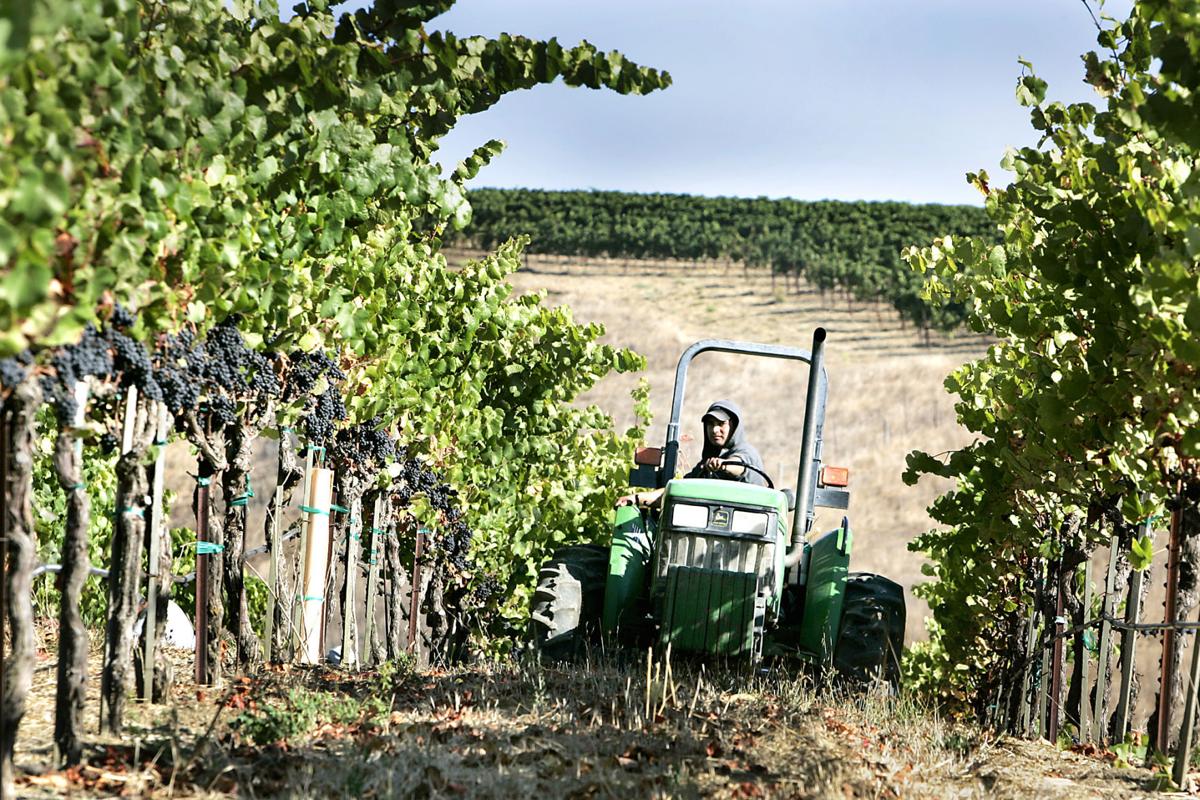
A tractor moves between rows of pinot noir grape vines during harvest at Artesa in 2017. Because the winery is now redeveloping its estate vineyards, it must ensure young vines receive the appropriate amount of water, according to winemaker Diogo-Draper - something that's been made difficult due to low rainfall this past season and the season before.
There’s one thing at the forefront of the minds of many of Napa Valley’s grape growers anticipating the 2021 harvest: water.
Different regions within Napa County have received between 60% and 70% less rainfall than is average this rainy season, experts say, part of a larger drought pattern that is emerging state-wide.
The previous 2019-2020 rainy season was also a dry one for North Bay wine country, according to Kaan Kurtural, associate specialist at the University of California, Davis’ Cooperative Extension in Viticulture, and the consecutive dry years have had a “compounding” effect.
Support local news coverage and the people who report it by subscribing to the Napa Valley Register.
“Rainfall is a little bit better than in 2020, but we’re now in the middle of a multi-year drought again,” he said. “If you look at the snowpack at the rest of the state, last year was the eighth driest year on record since 1865, and this year is the 11th driest.”
That’s concerned state officials. On Tuesday, the state’s Department of Water Resources announced in a press release that it would adjust its State Water Project allocation following what it called a “dry winter.” It will deliver just 5% of “requested” water supplies this year, down from its initial December 2020 projection of 10%. A day earlier, the agency announced it had mailed early warning notices to 40,000 farmers, the Sacramento Bee reported, telling them to prepare for “potential water supply shortages.”
Napa’s Carneros region, tucked within the southwest portion of the county, has received 8.19 inches of rain since Oct. 1, the start of the most recent water year, according to data from the University of California’s Cooperative Extension program. Oakville, higher north, has received just 10.36 inches. The county’s historic averages run between 20 and 40 inches depending on location, according to the Western Regional Climate Center.
Wine grapes use comparatively little water in the world of California agriculture: crops like lettuce and almonds, for example, use far more, according to Jon Ruel, CEO of Trefethen Family Vineyards. But this rainy season so far, Trefethen has recorded just 12 inches of rain on its vineyards; typically by this time that number is somewhere in the low 30s, according to Ruel.
Trefethen is prepared to begin irrigating its vineyards early if necessary, he said, and plans to utilize not just rainwater but recycled water from its own production facilities to do so. Still, its vineyards cannot rely on stopgap measures indefinitely.
“If we have prolonged drought – two years is significant, and if next year is dry this will really be pretty serious,” he said. “There is a degree to which we eventually need it to rain, of course.”
Low rainfall is typically associated with lower crop yields – vines with access to less water produce less fruit, according to Davis’s Kurtural. Growers will look to ensure their vines receive the water they need via pre-irrigation if necessary, he said, adding that typically wine grapes in the North Bay need less water than their counter parts in the hotter and drier Central Valley, where yields demanded of vineyards are typically larger anyway.
Napa Valley’s grape growers farm for quality, not quantity, Ruel added, underlining the differences between the North Bay and other wine growing regions in the state.
The rainfall this year has been similar to levels last seen in 2014 and 2015, amid a pronounced drought that had seized the state, according to Brittany Pederson, director of viticulture for Renteria Vineyard Management. There has been some variation through Napa County – some places might have received as much as 16 inches of rain, other just eight or nine – but overall the trend is somewhat worrisome, she said.
“Every single practice we do in the vineyard really can and does get altered based on the fact that we’re working with limited water,” she said. “It is definitely something of a collaborative effort within the industry.”
Artesa Estate Vineyards and Winery plans to be very cautious in its water usage, according to Head Winemaker Ana Diogo-Draper. The progression of the growing season will have to be “a balancing act,” she said, because Artesa is in the process of redeveloping its vineyards, and young vines require plenty of water to thrive.
“Fingers crossed we’ll see a little more rain in March and a little bit through April,” she said in an interview earlier this month.
Pederson, reflecting on the past month, said that rainfall through the end of March actually had ultimately taken vineyards where they need to be. Coming into the end of February, rainfall had the wine industry “on the concerned level as far as what we had gotten,” Pederson said. Now, though, most soils have reached an adequate level of moisture to help support vines through the season.
“That’s really what vines need – to be able to start the growing season with full soil moistures, so at least we have that,” Pederson added. “That makes everybody breathe a sigh of relief.”
Photos: Napa Valley grape harvest 2019
Napa Valley grape harvest 2019
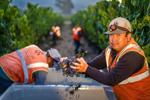
Workers bring the first grapes of the 2019 harvest.
Napa Valley grape harvest 2019
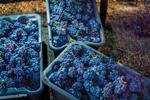
The pinot noir grapes will be made into sparkling wine for Mumm Napa Valley.
Napa Valley grape harvest 2019
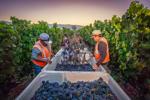
At first light Tuesday, workers brought in 17 tons of Pinot Noir grapes for Mumm Napa Valley, kicking off harvest 2019.
Napa Valley grape harvest 2019
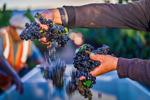
Winemaker Tami Lutz described the first grapes as having great flavor and bright acidity, "just what we want."
Napa Valley grape harvest 2019
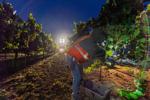
One worker harvests grapes by lights before the sun rose on Tuesday morning in a vineyard in Yountville.
Napa Valley grape harvest 2019
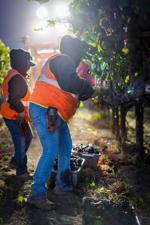
Workers harvest by lights at Rogers vineyard.
Napa Valley grape harvest 2019

Balloons float over the vineyards at harvest begins in Napa Valley.
Napa Valley grape harvest 2019
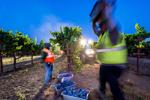
The 2019 harvest began at dawn on Tuesday at Rogers vineyard in Yountville.
Napa Valley grape harvest 2019

Tami Lotz is marking her first harvest as head winemaker at Mumm Napa Valley. She started with the winery as an intern in 2002.
Most-read Napa County wine stories of 2019
These 10 Napa County wine stories garnered the most page views on the Napa Valley Register website and were most popular with our online readers in 2019.
June 1, 2019: Under a magenta-ceilinged banquet tent at the Meadowood Napa Valley resort near St. Helena, the paddles shot up and the prices c…
Jan. 10, 2019: Napa County has told the new The Prisoner winery to stop selling art, stop selling jellies and jams and stop offering food serv…
July 23, 2019: Wine retailer Gary Fisch signed a lease Monday to open Gary’s Wine & Marketplace at the former Dean & DeLuca space in s…
May 2, 2019: The Migliavacca Wine Company is no longer merely part in Napa Valley’s history. It has been officially revived by Katie Migliavac…
May 31, 2019: Several thousand people attended the Barrel Auction as part of Auction Napa Valley at St. Helena’s restored historic Louis M. Ma…
Oct. 9, 2019: First an earthquake, then devastating wildfires – and now extended power shutoffs. Napa’s wine industry has averted disaster bef…
June 13, 2019: The Calistoga Planning Commission took up the debate of what does or does not constitute an “event” at a winery.
Jan. 24, 2019: The reasons for purchasing a Napa Valley vineyard and making wine abound, and every owner has a different story. For Kisha and …
May 30, 2019: When Mike Hirby first moved to the Napa Valley, he didn’t have a job and was living in a tent. The year was 2000, and although h…
Nov. 5, 2019: Napa’s history as winemaking region dates to the mid-19th century. There were hundreds of operational wineries in the area, thou…
You can reach Sarah Klearman at (707) 256-2213 or sklearman@napanews.com.
March 26, 2021 at 06:04AM
https://ift.tt/3w1pHVb
Napa Valley's grape growers chart course in the face of an emerging statewide drought - Napa Valley Register
https://ift.tt/3eO3jWb
Grape

No comments:
Post a Comment